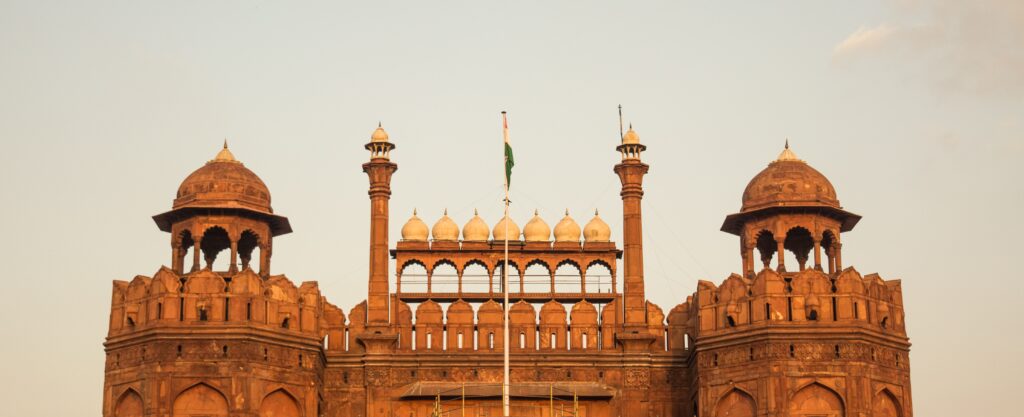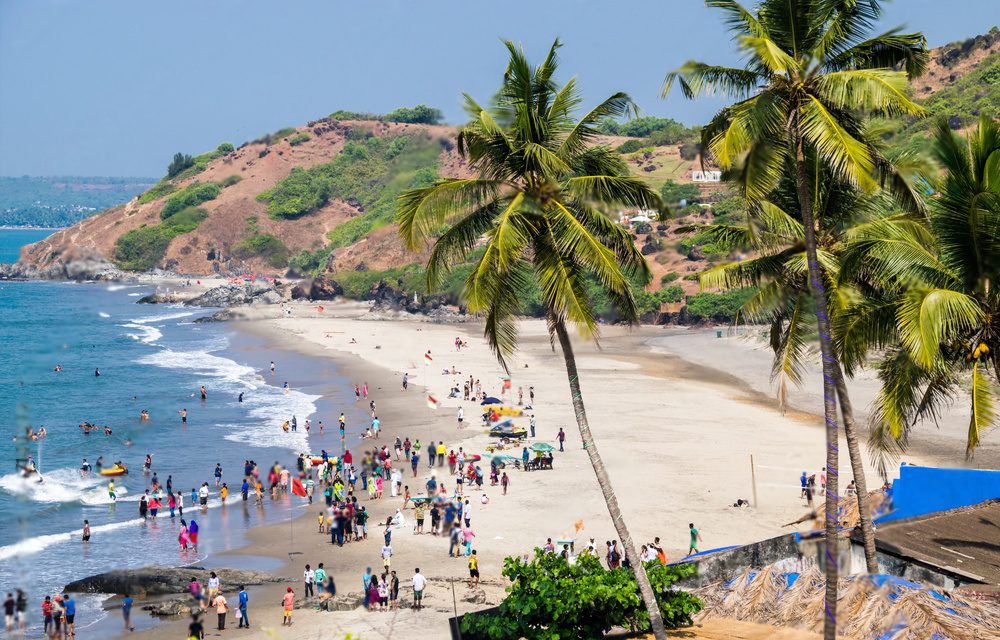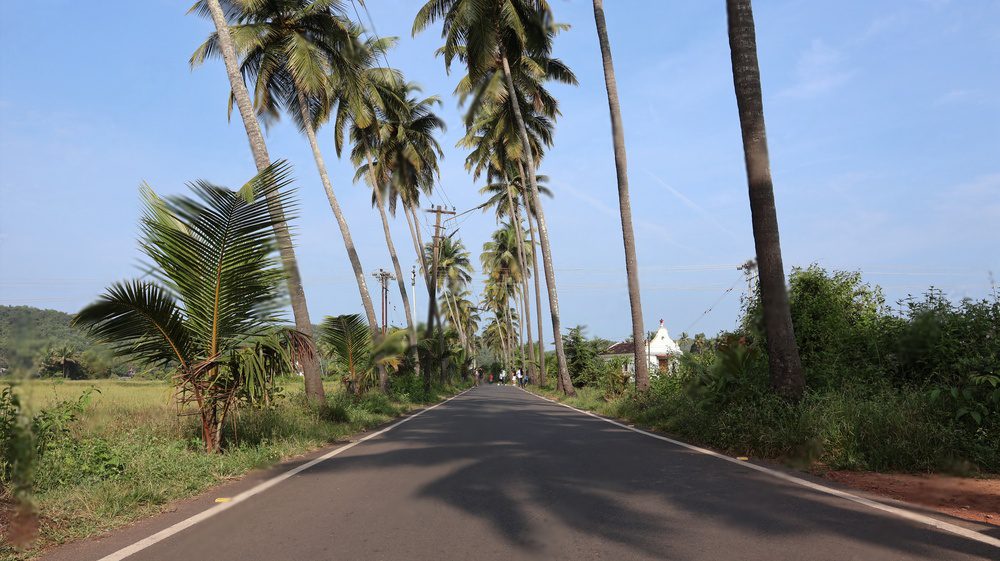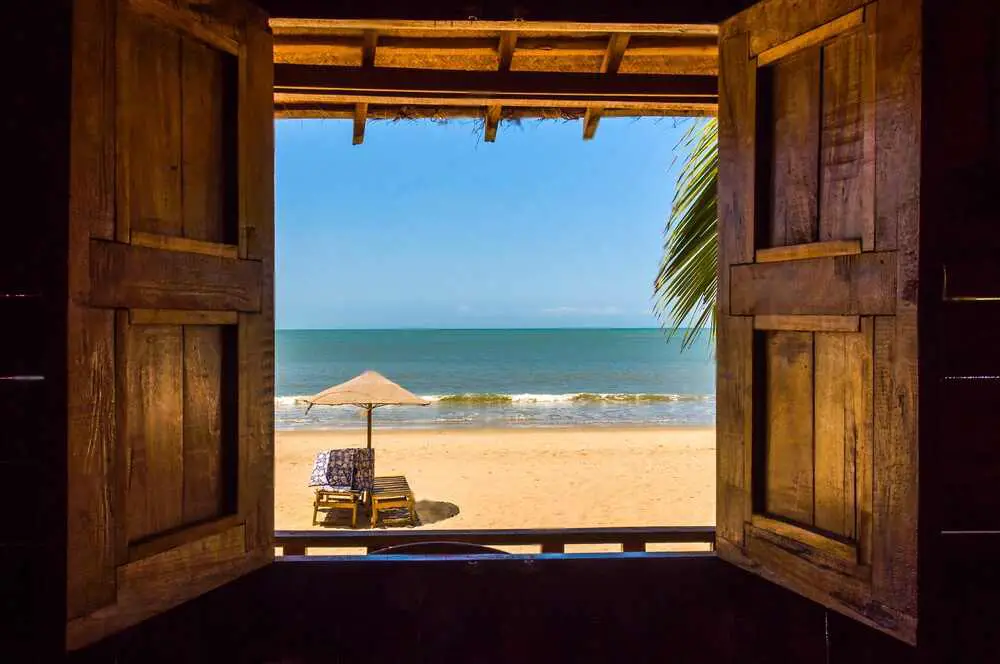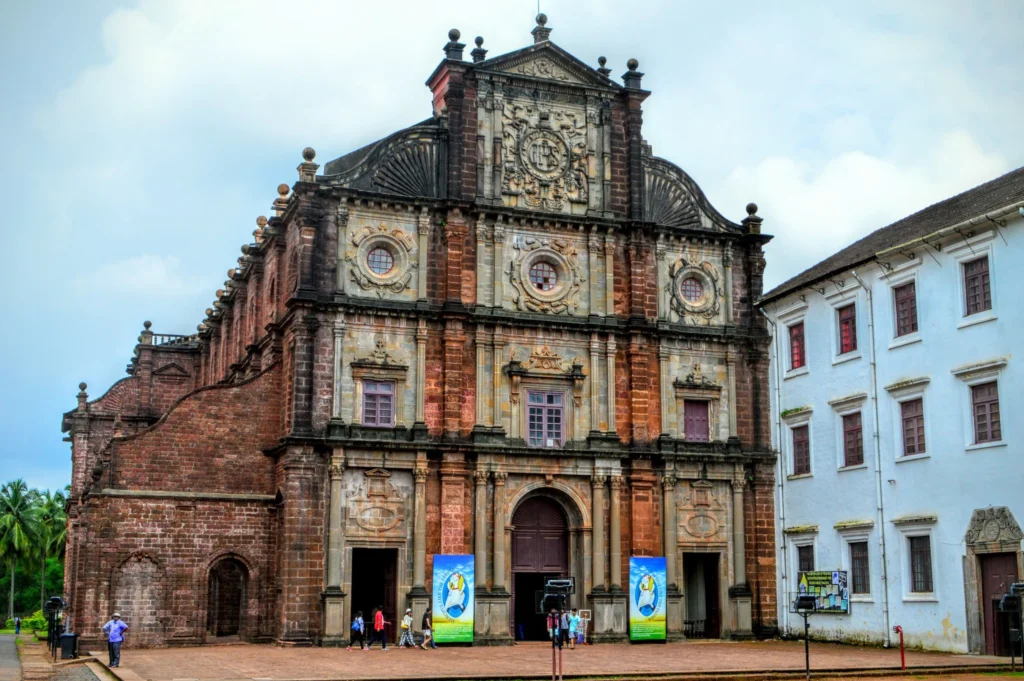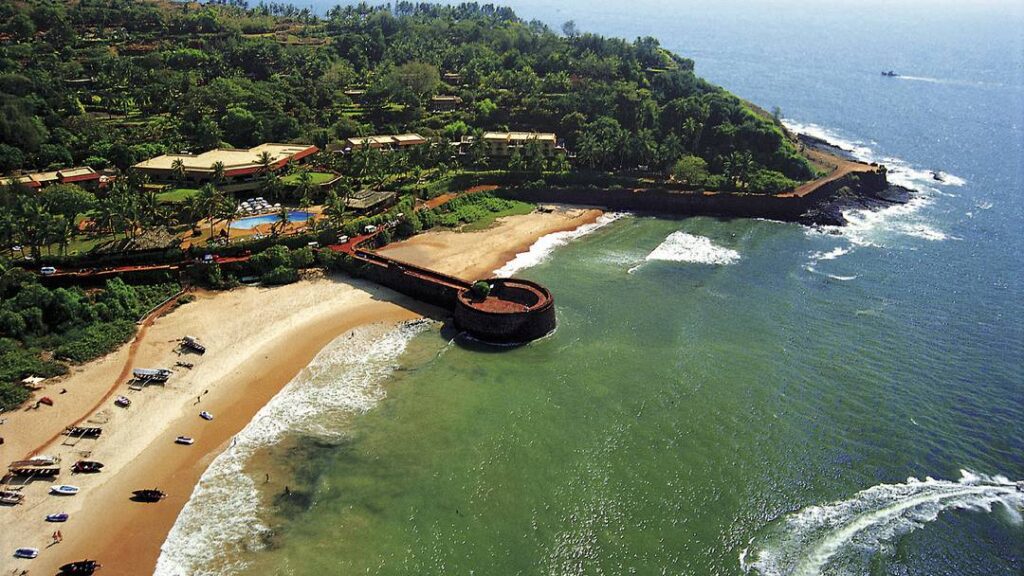Unveiling the Splendor of Delhi’s Mughal Marvel: A Journey Through the Red Fort
Delhi overflows with vibrant history and monuments from bygone eras. One of its most magnificent sites is Lal Qila, or the Red Fort – the colossal 17th-century fortress palace enveloped in awe and legends. Its red sandstone walls echo tales of Mughal emperors and witness to pivotal moments in Indian history. Join me as I share everything you need to plan an incredible visit to this highlight of Old Delhi. Discover its ornate architecture, from the majestic Diwan-i-Am to the serene Rang Mahal. Immerse yourself in its rich cultural tapestry at the Sound and Light Show, where history comes alive after dusk. Experience the bustling markets of Chhatta Chowk, offering a glimpse into Delhi’s vibrant past.
The Glorious History of Red Fort:
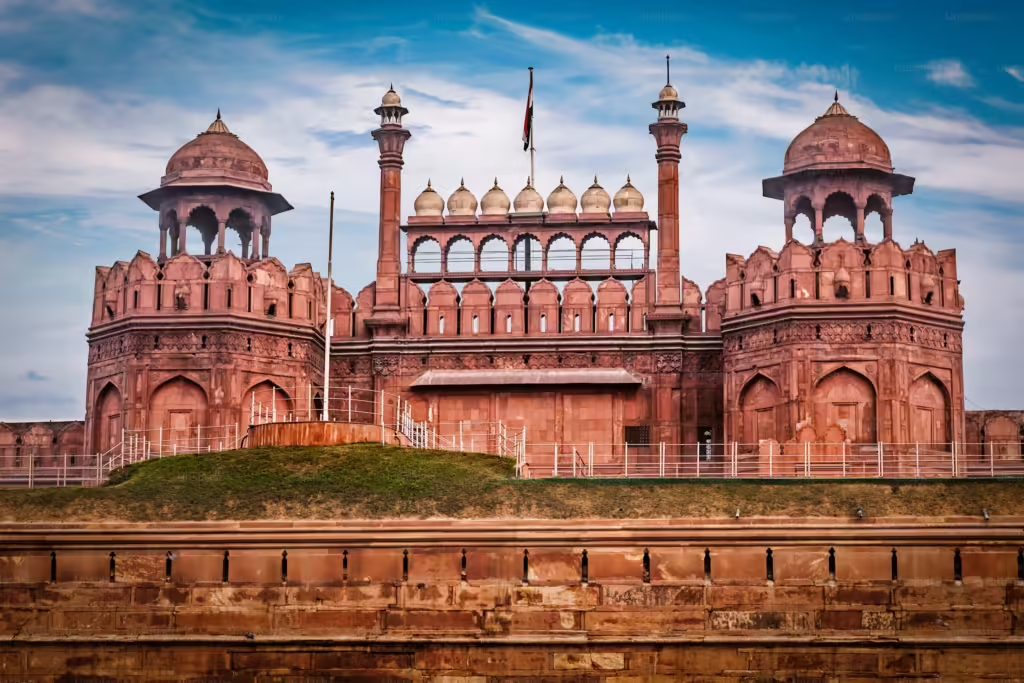
- Historical Icon: Built by Mughal Emperor Shah Jahan in the mid-17th century, the Red Fort in Delhi served as a symbol of imperial power for nearly 200 years until 1857.
- Witness to History: From witnessing the rise and fall of empires to pivotal moments like Jawaharlal Nehru raising India’s flag in 1947, the Red Fort encapsulates India’s journey from colonial rule to independence.
- Living Heritage: Each brick and wall of the fort resonates with tales of Mughal courts, battles, and diplomatic exchanges, offering visitors a vivid connection to India’s rich cultural and political history.
Getting to Red Fort in Delhi:
Red Fort is located in the old part of Delhi, with excellent connectivity by all forms of transport:
- By Air: The Indira Gandhi International Airport is the gateway into Delhi if you are flying. A taxi or a ride-sharing service from the airport is easy to arrange for the quick trip to the Red Fort. The airport is an international gateway designed for easy arrival by most major cities around the world.
- By Train: Delhi has a good railroad and the Old Delhi Railway Station is the closest to Red Fort. You can also take an auto-rickshaw, cycle rickshaw or a taxi from there to reach the fort. Alternatively, you can go to the New Delhi Railway Station and it’s just a short ride away.
- By Metro: Delhi Metro is a comfortable and cheap means of transport to the Red Fort. Chandni Chowk is the nearest metro station and has good links with all other parts of the city. If you step out of the metro station, you could board a rickshaw or walk your way to the fort in Old Delhi where chaos prevails.
- By Bus: Delhi has a very good bus transport system and many of them touch Old Delhi which is really close to the Red Fort. Jump on a local bus or check out one of the guided city tour buses that take in most major historical landmarks.
- By Car: Delhi also has taxis and ride-sharing services for individuals who prefer the convenience of their own vehicle. The Red Fort can be easily reached by road and there are parking facilities close to the fort.
What to See at Red Fort:
The Red Fort has many halls, gardens and galleries to explore within its grounds. Top highlights include:
- Chatta Chowk: This covered exotic bazaar sold everything from textiles to jewelry during Mughal times.
- Naubat Khana: The former Drum House where musical instruments were played for the emperor.
- Diwan-i-Khas: The lavish Private Audience Hall embellished with gems and marble.
- Mumtaz Mahal: The lovely six-chambered palace for royal women.
- Rang Mahal: The Painted Palace with beautiful floral designs on the ceiling.
- Moti Masjid: A magnificent pearl mosque added later by Aurangzeb.
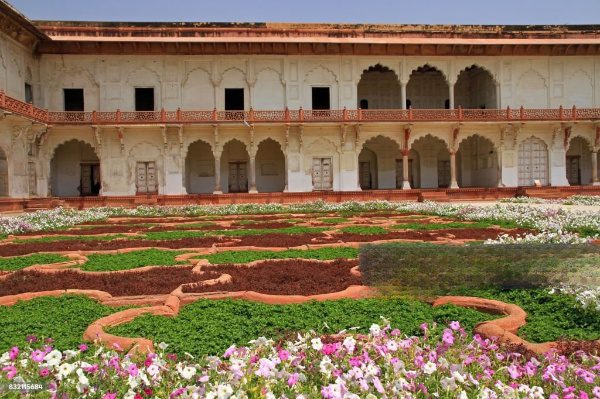

Activities Around Red Fort:
Pair your visit to the Red Fort with these nearby experiences:
- Take an Audio Tour of Chandni Chowk: Experience the hustle and bustle of Chandni Chowk, Delhi’s oldest and busiest market, on a leisurely cycle rickshaw ride. Navigate through narrow lanes lined with centuries-old havelis and bustling shops, immersing yourself in the vibrant sights and sounds of old Delhi life.
- Feast on Delicious Old Delhi Street Food: Indulge in the flavors of Old Delhi with mouth-watering delights like parathas stuffed with spicy fillings and succulent kebabs sizzling on charcoal grills. The lanes near the Red Fort are a paradise for food enthusiasts, offering a culinary journey through centuries of Mughal influences.
- Watch the Sound & Light Show at Red Fort: Every evening, witness the dramatic retelling of history through the Sound & Light Show at the Red Fort. Illuminated against the night sky, this UNESCO World Heritage site comes alive with narrations of its rich legacy, transporting you through the epochs of Mughal rule.
- Shop for Souvenirs in the Bazaars: Explore the vibrant bazaars surrounding the Red Fort to discover unique souvenirs. From traditional fragrances (ittar) to intricately embroidered fabrics and exquisite silver jewelry, these markets offer a treasure trove of handcrafted items that reflect Delhi’s cultural diversity.
- Visit Jama Masjid: Adjacent to the Red Fort, visit Jama Masjid, India’s largest mosque, renowned for its stunning architecture crafted from red sandstone and white marble. Climb the minarets for panoramic views of Old Delhi or join the faithful for prayer, experiencing the spiritual heart of the city.
- Explore Historical Havelis: Wander through the labyrinthine alleys of Chandni Chowk to discover hidden gems like historical havelis (mansions) that once housed Delhi’s elite. Marvel at their intricate architecture, adorned with delicate carvings and ornate balconies, offering glimpses into Delhi’s aristocratic past.
- Attend a Traditional Ceremony: Experience the spirituality of Delhi by attending a traditional ceremony at a nearby temple or participating in evening prayers at a local gurdwara (Sikh temple). These serene moments amidst the city’s bustling streets offer a tranquil retreat and deeper insight into Delhi’s cultural fabric.
Tips for Visiting Red Fort:
To make the most of your Red Fort visit, keep these tips in mind:
- Capture Early Morning Tranquility: Arrive early morning to soak in the peaceful ambiance and beat the crowds. Experience the serenity of the Red Fort grounds as the sun rises, casting a golden glow over its majestic architecture.
- Enjoy Sunset Views: Alternatively, visit late afternoon to witness the fort bathed in the warm hues of sunset. Capture stunning photographs of the fort’s silhouette against the colorful Delhi skyline.
- Respect Dress Code: Respect local customs and dress modestly when visiting religious sites like Jama Masjid. Cover your shoulders and legs to show reverence and avoid any cultural misunderstandings.
- Explore Nearby Attractions: Extend your visit by exploring nearby attractions such as Raj Ghat, the memorial to Mahatma Gandhi, or the bustling markets of Chandni Chowk. Dive deeper into Delhi’s cultural tapestry with each step.
- Savor Local Cuisine: After exploring, treat yourself to local delicacies like spicy chaat or refreshing lassi in nearby eateries. Embrace the flavors of Delhi’s street food scene and indulge in culinary delights that reflect the city’s diverse heritage.
- Engage with Locals: Interact with locals to gain insights into daily life in Delhi. Discover hidden gems and local stories that add depth to your travel experience.
- Support Local Artisans: Purchase souvenirs directly from local artisans or shopkeepers in the bazaars near the Red Fort. Your patronage supports the community and preserves traditional craftsmanship.
- Leave No Trace: Respect the historical integrity of the Red Fort by disposing of trash responsibly and refraining from touching or defacing the ancient structures. Help preserve this UNESCO World Heritage site for future generations to enjoy.
Share Your Experience:
Exploring the Red Fort in Delhi with Xplro.com was a captivating journey through time. The grandeur of its Mughal architecture, intricate details in Diwan-i-Khas, and the vibrant markets of Chhatta Chowk painted a vivid picture of India’s imperial past. Climbing the ramparts during sunset provided a mesmerizing view of Delhi’s skyline, a moment etched in memory. The Sound and Light Show, featured on Xplro.com, added a theatrical dimension to the historical narrative. Navigating Old Delhi’s bustling streets to reach this iconic site was an adventure in itself. The Red Fort stands not just as a monument but as a living chronicle, weaving history into every step.
Conclusions
Exploring the Red Fort of Delhi unveils not just a monument, but a living saga of India’s past. From the grandeur of its Mughal architecture to the bustling markets of Chandni Chowk nearby, each step echoes centuries of history. Whether savoring street food flavors or marveling at the Sound & Light Show, the Red Fort offers a glimpse into Delhi’s vibrant cultural tapestry. Immerse yourself in this magnificent journey through five essential steps, and let the legacy of the Red Fort linger long after your visit.
Explore More
Continue your exploration of Delhi’s rich heritage by visiting other historical gems such as Humayun’s Tomb and Qutub Minar, each offering unique insights into India’s cultural evolution. Dive deeper into the bustling lanes of Chandni Chowk and savor the diverse flavors of Old Delhi’s street food scene. Plan your next adventure with Xplro.com to uncover hidden treasures and create lasting memories in the heart of India’s capital. Explore more on Xplro.com to discover additional travel guides and insider tips for exploring Delhi and beyond!
Happy Travels!
